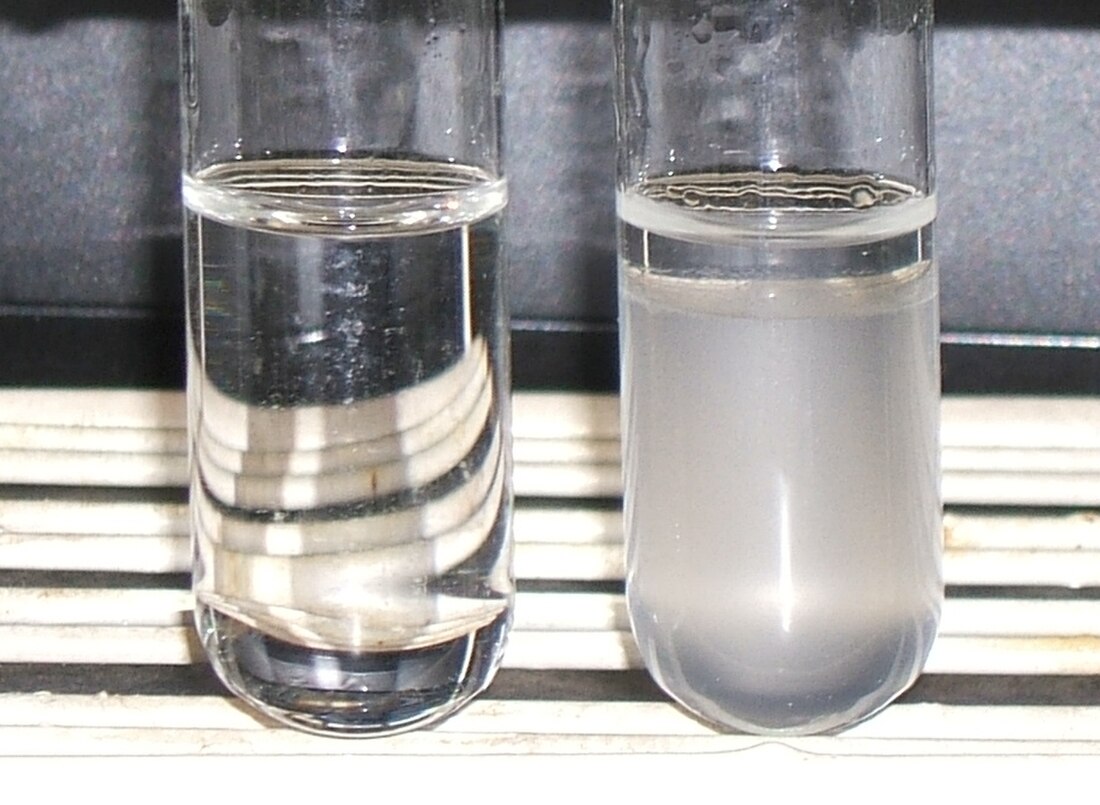Comparison of psychoactive alcohols in alcoholic drinks
From Wikipedia, the free encyclopedia
Comparison of psychoactive alcohols in alcoholic beverages.

The Lucas test in alcohols is a test to differentiate between primary, secondary, and tertiary alcohols.
General
| IUPAC name | Common name | Classification | CAS |
|---|---|---|---|
| Ethanol | Alcohol, drinking alcohol, ethyl alcohol, EtOH | Primary | 64-17-5 |
| Propan-1-ol | 1-Propanol, 1-propyl alcohol, PrOH | Primary | 71-23-8 |
| 2-(1H-Indol-3-yl)ethanol | Tryptophol | Primary | 526-55-6 |
| 2-Methylbutan-1-ol | 2-Methyl-1-butanol (2M1B) | Secondary | 137-32-6 |
| 2-methylpropan-1-ol | 2-Methyl-1-propanol (2M1P), Isobutanol | Primary | 78-83-1 |
| 2-Methylbutan-2-ol | 2-Methyl-2-butanol (2M2B), tert-Amyl alcohol (TAA, tert-amylol) | Tertiary | 75-85-4 |
| 2-Methylpropan-2-ol | 2-Methyl-2-propanol (2M2P), tert-Butyl alcohol ((TBA), tert-butanol), t-BuOH | Tertiary | 75-65-0 |
| 2-Phenylethan-1-ol | Phenethyl alcohol, 2-Phenylethanol | Primary | 60-12-8 |
| 3-Methylbutan-1-ol | 3-methyl-1-butanol (3M1B), isoamyl alcohol, isopentyl alcohol (isopentanol) | Primary | 123-51-3 |
Pharmacology
| IUPAC name | IARC carcinogen group | Toxic metabolite(s) | Alcohol by volume (ABV)[1] | LD50 in rat, oral[2] |
|---|---|---|---|---|
| Ethanol | Group 1 | Acetaldehyde → acetic acid | Up to 95.6% in rectified spirit | 7060 mg/kg |
| Propan-1-ol | Propionaldehyde → propionic acid | 2.8% (mean) in Jamaican rum: 2384–3130 mg/100 mL. Up to 3500 mg/L (0.35%) in spirits.[3] | 1870 mg/kg | |
| 2-(1H-Indol-3-yl)ethanol | ? | ? | ? | |
| 2-Methylbutan-1-ol | ? | 1.2% (mean) in Bourbon: 910–1390 mg/100 mL | 4170 mg/kg[4] | |
| 2-methylpropan-1-ol | ? | 0.9% (mean) in Rye mash cistern room: 534–1197 mg/100 mL | 2460 mg/kg | |
| 2-Methylbutan-2-ol | None (tertiary alcohol) | 0.07% in beer: 70 mg/100 mL (see tert-Pentyl alcohol in ref) Found in cassava fermented drinks | 1000 mg/kg | |
| 2-Methylpropan-2-ol | None (tertiary alcohol) | Identified, not quantified, in beer[5] | 2743 mg/kg | |
| 2-Phenylethan-1-ol | ? | 0.1% in non-yeasted cider (Kieser 1964): 100 mg/100 mL | 1790 mg/kg | |
| 3-Methylbutan-1-ol | ? | 1.5% (mean) in French Brandy: 859–2108 mg/100 mL | 1300 mg/kg |
Difference to ethanol
| IUPAC name | % intoxication by alcoholic drink (ABV x potency compared to EtOH / total ABV) | Therapeutic index (Potency compared to EtOH/EtOH LD50:LD50 ratio) | Potency compared to EtOH | EtOH LD50:LD50 ratio |
|---|---|---|---|---|
| Ethanol | - | - | - | - |
| Propan-1-ol | 21%: 2,8×3÷40 | 0.8 (mean): 0.5-1.1 | 3 (mean): 2-4 | 3.8 |
| 2-(1H-Indol-3-yl)ethanol | ? | ? | ? | ? |
| 2-Methylbutan-1-ol | ? | ? | ? | 1.7 |
| 2-methylpropan-1-ol | ? | ? | ? | ? |
| 2-Methylbutan-2-ol | 28%: 0.07×20÷5 | 2.8 | 20 | 7.1 |
| 2-Methylpropan-2-ol | ? | ? | ? | 2.6 |
| 2-Phenylethan-1-ol | ? | ? | ? | ? |
| 3-Methylbutan-1-ol | ? | ? | ? | 5.4 |
Characteristic
| IUPAC name | Color/Form[6] | Odor[6] | Taste[6] |
|---|---|---|---|
| Ethanol | Clear, colorless, very mobile liquid | Mild, rather pleasant; like wine or whiskey. Weak, ethereal, vinous odor. | Burning, slightly sweet |
| Propan-1-ol | Colorless liquid | Similar to ethanol | Characteristic ripe, fruity flavor. Burning taste |
| 2-(1H-Indol-3-yl)ethanol | ? | ? | ? |
| 2-Methylbutan-1-ol | Oily, clear liquid. Colorless liquid | Characteristic, disagreeable odor. | Pungent, repulsive taste |
| 2-methylpropane-1-ol | Colorless, oily liquid. Clear, colorless, refractive, mobile liquid. | Suffocating odor of fusel oil. Slightly suffocating; nonresidual alcoholic. Sweet, musty odor | Sweet whiskey taste |
| 2-Methylbutan-2-ol | Colorless liquid | Characteristic odor. Camphor odor | Burning taste |
| 2-Methylpropan-2-ol | Colorless liquid or solid (crystals) (above 78 degrees F) | Camphor-like odor | ? |
| 2-Phenylethan-1-ol | ? | Intense odour of roses | Burning |
| 3-Methylbutan-1-ol | Oily, clear liquid. Colorless liquid. | Characteristic, disagreeable odor. | Pungent, repulsive taste |
References
Wikiwand - on
Seamless Wikipedia browsing. On steroids.
